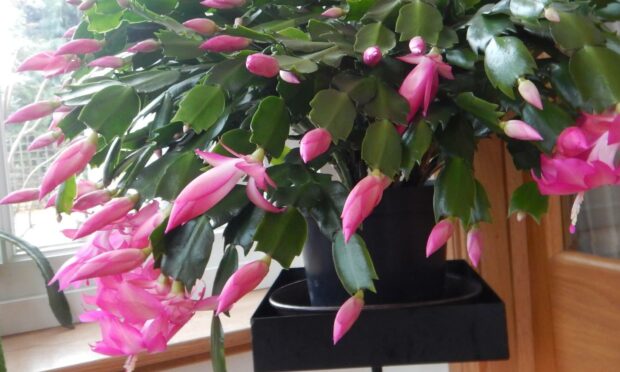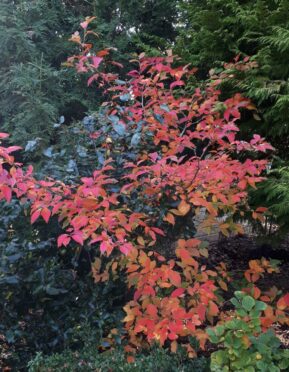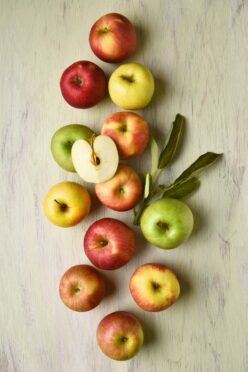Our Christmas cactus has started to flower. A bit premature? Not really, it usually starts about now and if it is true to form it will produce more and more flowers in the coming weeks.
Will it still be in flower come Christmas? Some years it does and some years it is more or less “over” by then.
Currently it sits in the front porch, facing east.
Back in my Beechgrove days, although we were off air by Christmas, I used to get the question: “Why does my Christmas cactus NOT flower at Christmas?”
Range of species
In very broad terms, we have to find out if the variety or species is winter, spring or early summer flowering.
Yes, indeed, there is actually a range of different sorts.
We all started with what once was called Zygocactus truncates, the Christmas cactus. For your information it is now known as Schlumbergera truncatus.
Then there is the Easter cactus, Rhipsalidopsis gaertneri, sometimes it too is labelled Schlumbergera.
Natural habitat
Still with me? Once you have identified which one you have, the secret of getting it to flower at the “right” time is to try and mimic the conditions of its natural habitat and they all belong to the group known as Forest cacti, the other major category being Desert cacti.
The main reason for our cactus flowering now is down to the fact that we live in a modern house with good insulation, and from September onwards the central heating tends to come on a little more often for slightly longer periods.
Maintenance programme
In gardening terms, therefore, we are gently forcing the plant on without realising it. The annual maintenance programme for Christmas cactus to flower at Christmas is as follows:
After flowering, through January and February and March, give the plant a rest, let it dry off a bit but keeping it in good light in a cool temp, round about 12C.
Come April, start to water again and feed if you aim to keep it in the same size pot. On the other hand, once it is into active growth again, it is a good time to pot on into a bigger pot, if you so wish.
Family Trees
Back now to the big topic of the moment – trees.
“Advice please,” said an email from a chum in Stonehaven.
He went on: “Saw an ad for fruit trees in a magazine and they mentioned an apple tree with three different kinds on it. How does that work? I have space for one tree, so this would be ideal. Any snags?”
This form is referred to as a “Family Tree”. Ideal for the smaller garden because as you will know, to produce regular crops, the flowers on most apple tree varieties have to be cross-pollinated with flowers from another apple tree, if they are to develop fruits.
Example: Picture a commercial orchard; imagine a planting pattern involving nine trees in a 3 x 3 square, they are all the same bar the one in the middle, it is a different variety and chosen because it flowers at the same time as the other eight and the pollen is compatible with the flowers on these eight trees in the square.
Getting a good crop
Good crops should result. The pollen from the eight will be compatible with number nine but that is not so important, in fact the variety may not even be so popular commercially.
Looking for an example I referred first to The Fruit Garden Displayed, an RHS publication which I acquired in 1960. Reason? There is a whole chapter devoted to Fertility Rules in Fruit Planting.
Essentially, the grower of Family Trees will match up three varieties which flower at the a same time.
One tree, three branches
However there is one snag which you may have to deal with. Competition. Let me explain: basically, the grower will pick three compatible apple varieties and graft a scion (cutting) from each one on to one rootstock.
You purchase one tree which has three main branches, one of each chosen variety. When they start to produce flowers, they will cross-pollinate each other, producing a crop of three different varieties but, over time, one or other of the chosen varieties may start to outgrow (dominate) the other two.
Apart from becoming lop-sided in its growth, quite often the dominant, strongest grower will tend to go “all to growth” producing fewer flowers and therefore less fruit. This is further complicated because, if it doesn’t flower, it will not be producing pollen to cross with the others.
We did have such a tree in the original Beechgrove Garden (1978/88) but we didn’t repeat the exercise when we “flitted”, because I think we were disappointed with the ploy.
That said, I note that a number of producers are still offering Family Trees, maybe they are becoming more cunning by selecting more compatible partners for this three-way marriage.












